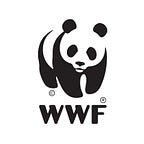Nothing Rosy for Kenya’s Lake serving the World Valentine’s Day Roses
If you received a rose this Valentine’s or bought a bouquet, there’s a good chance they originated from a farm around Lake Naivasha. This picturesque freshwater lake is not just a tourist hotspot with its iconic birds, African fish eagles and hippos, it is also a lifeline for local communities and businesses as a vital water source.
Recognized as a Wetland of International Importance by the Ramsar Convention, Lake Naivasha and its catchment area are integral to supplying fresh vegetables and cut flowers for local and export markets.
Yet, for this lake, water quantity and quality have remained persistent concerns, casting dark shadows over its ecosystem. To ensure the commercial farms in the basin use the scarce resource sustainably, World Wide Fund for Nature — Kenya (WWF-Kenya) is spearheading a water stewardship project in collaboration with Waste and Resource Action Programme (WRAP) and WWF-UK to support the flower farms set up appropriate waste-water management systems.
This intervention further helps fresh produce buyers from the United Kingdom (UK) meet the ambitious commitments to source at least half of all fresh food and drinks from sustainably managed water catchments, under the Courtauld 2030 Water Roadmap. Recently, a delegation from the UK, led by Harriet Lamb — WRAP Chief Executive Officer and Conor Linstead — WWF-UK, Freshwater Specialist, toured the Lake Naivasha Basin. WRAP is funding the Kenya Collective Action Water Stewardship Project which aims to enhance sustainable sourcing and water management in the basin.
The project has four objectives to build more sustainable water management, bringing together Kenya’s Water Resources Authority, WWF-Kenya and the local community under the Lake Naivasha Basin Umbrella Water Resource Users Association together with the flower farms’ association-Lake Naivasha Growers’ Group
During the three-day tour, the delegation visited two flower farms which have been given technical assistance to improve the treatment of wastewater, setting up artificial wetlands where gravel and plants help clean the water. The artificial wetlands have enabled them to sieve out pollutants and reuse the cleaned water in the flower firms. This is a powerful example of a circular economy in the flower industry, reducing water use by 10%.
Additionally, they visited the Upper Gilgil Water Resource Users Association to appreciate the River Health Assessment data collection process where the local communities, across the catchment have been trained as first-line scientists to test the water and report results. The river health assessments,conducted monthly, measure the river’s acidity and alkalinity, level of dissolved oxygen, turbidity and surviving macro-organisms using various simple tools. WWF-Kenya works with nine Water Resource Users Associations in the basin.
By Leopold Obi
